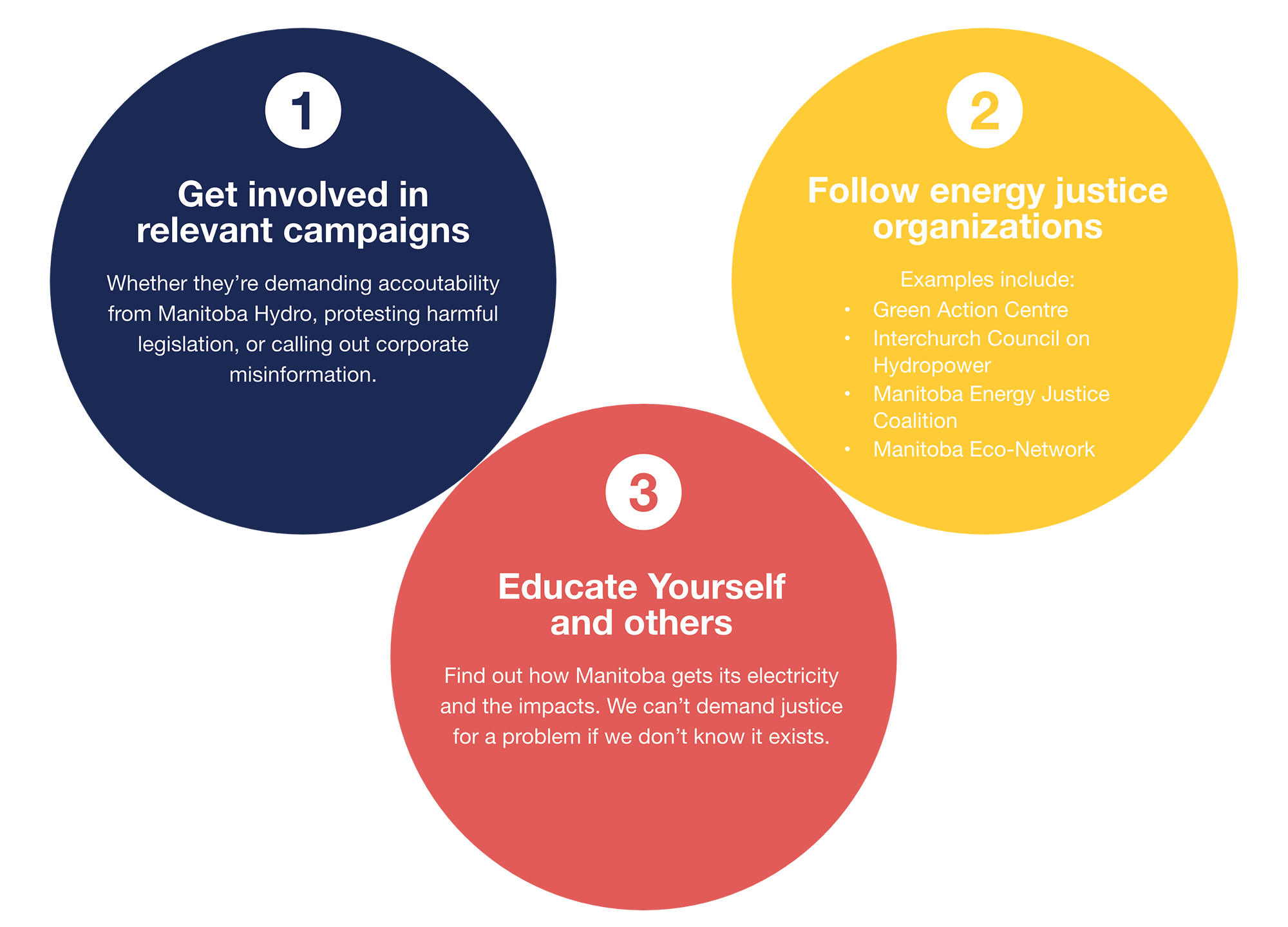We encourage you to contact us, if you notice we haven’t mentioned impacts that you or someone you know have experienced.
By flooding rivers to create reservoirs, thousands of square kilometers of land has been submerged. This leads to the release of methane as vegetation decomposes underwater; the loss of unique and valuable wildlife habitat; and more (see above). Reservoirs are used as water storage, meaning the flow of rivers and even lakes is controlled by Manitoba Hydro instead of natural seasonal processes. Fluctuating water levels are pushed to extremes in often failed attempts to maximize water flow and therefore, profitability. Policies such as the Augmented Flow Program, allow for this unnatural water fluctuation causing vast erosion and destabilization of thousands of kilometers of shoreline.
By disrupting the flow with reservoirs, it creates a combination of slower currents from impoundment, and increased sedimentation from erosion making the water muddied and murky. These poor conditions encourage algae blooms and promote increased levels of toxic methylmercury. Fish behavior also changes because they are hindered from migrating up and downstream, and spawning habitats are destroyed. Many fish are injured and killed by turbines and their populations decline. The wildlife that feeds on these fish – already threatened by habitat loss – also start to experience population decline. The fish, local game, and furbearers that remain are often unwell, inflicted with cysts or made inedible by the increased mercury content.
As a result, there is a decline in the numbers and quality of game and fish populations, local economies suffer. Fisheries are destroyed. Traplines are flooded or made inaccessible by fences. Traditional livelihoods are irreversibly damaged and sharing land-based knowledge is interrupted. Communities experience a forced transition to a wage economy. In addition to these costs, members of the community are subjected to monthly electricity bills upwards of $500 for the power produced on their ancestral lands. Communities that join partnerships with the hydro-company on these projects often find themselves incurring immense debt.
Hydroelectric developments also change a community’s structure. External workers come in to construct, maintain, and operate the generating stations. These workers live in “man-camps” that are in or very close to communities. The workers are not permanently situated at each site, they frequently migrate to and from these sites leading to a transient (constantly changing) population. This type of working environment has led to the introduction of drugs and alcohol into communities, resulting in a rise of substance abuse and social emergencies that communities continue to grapple with. Members of these now hydro-dominated communities live with racism, violence, and sexual assault, that have been systematically dismissed, ignored and historically covered up.
Where safety and well-being were once assured, hydroelectric developments have left uncertainty and fear. Boaters are threatened by the eroded debris that hide in the murky waters. They carefully navigate the waters watching for entire rotting tree trunks that may catch motors and lead to fatal accidents. Community members carefully navigate ice roads looking out for thinning ice with very fast undercurrents (when dams are opened), and air pockets between the ice and waters (due to quickly fluctuating water levels). Swimmers (often children) come out of the water covered in rashes, unable to enjoy the nature their parents experienced growing up. Boil water advisories continue unaddressed in an unending reminder of their now-contaminated drinking water.
All of these impacts culminate in the ongoing cultural genocide and environmental racism towards Indigenous Peoples. Their traditional ways of life are lost to Manitoba Hydro as their economies collapse and they can no longer hunt, fish, or live as they used to. Indigenous communities are forced to relocate from their ancestral lands, and their cultural sites and burial grounds are flooded for the sake of economic gain.
Hydroelectric developments have significant impacts on the environment and Northern First Nations. Unfortunately, the image of “green,” “clean”, “low-impact” hydropower is a myth that disguises tremendous harm.
Hydropower is the main source of Manitoba’s energy, and it comes at a great cost to First Nations’ communities. Staying silent on these issues lets Manitoba Hydro stay unaccountable to its First Nations partners, and legitimizes the corporation’s disrespect for the environment, Indigenous culture, and ways of life.
Manitoba Hydro has profited for over a hundred years at the expense of its First Nation partners. It pushes for the development of devastating hydroelectric mega projects to make millions of dollars exporting power to the United States, and Indigenous communities pay the price a thousand times over. New partnerships like Wuskwatim and Keeyask are more of the same, with communities being saddled with millions of dollars in debt – on top of cultural and environmental costs – for a generating station that provides little or no economic benefit.
If nothing is done to stop them, Manitoba’s electrical utility will continue to destroy the environment, economy and culture, making the same promises of low-impact energy without the evidence or history to support them.
Manitoba’s long history of hydroelectric developments cannot be dismantled overnight, but there are ways to raise awareness and slow or even begin to reverse the ongoing devastation to Manitoba’s North:
